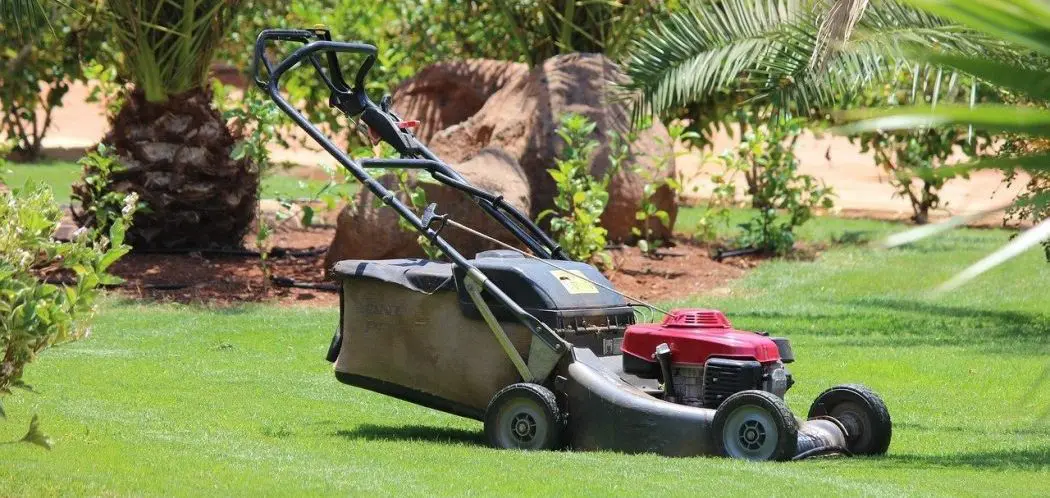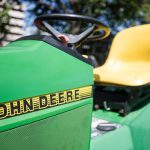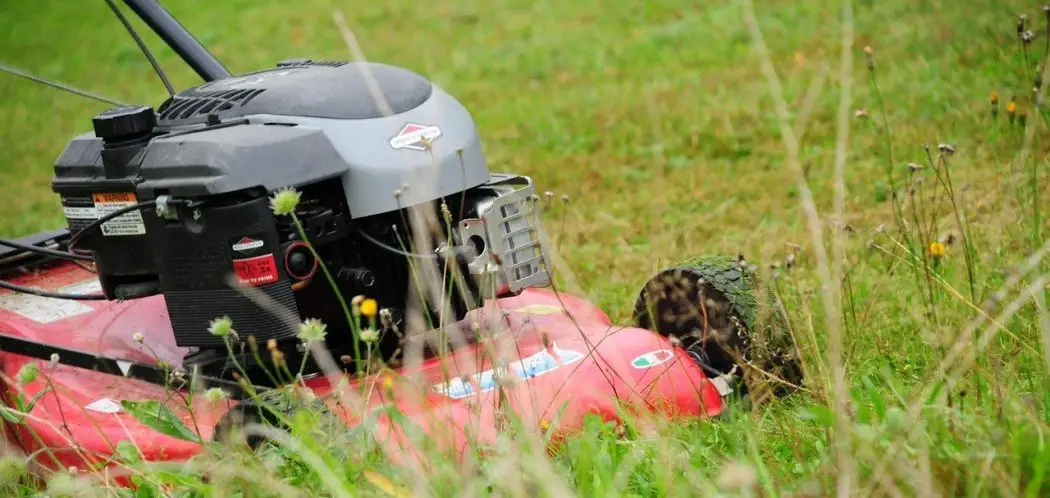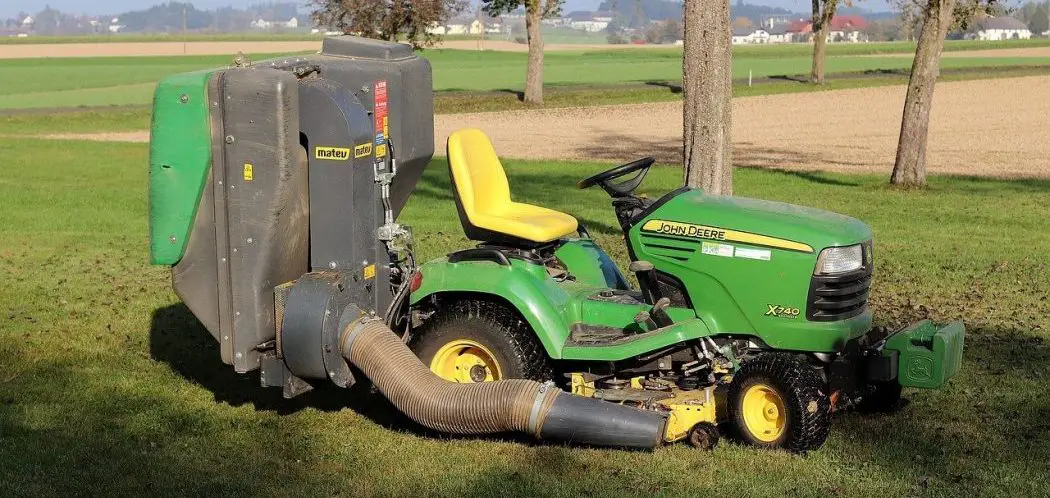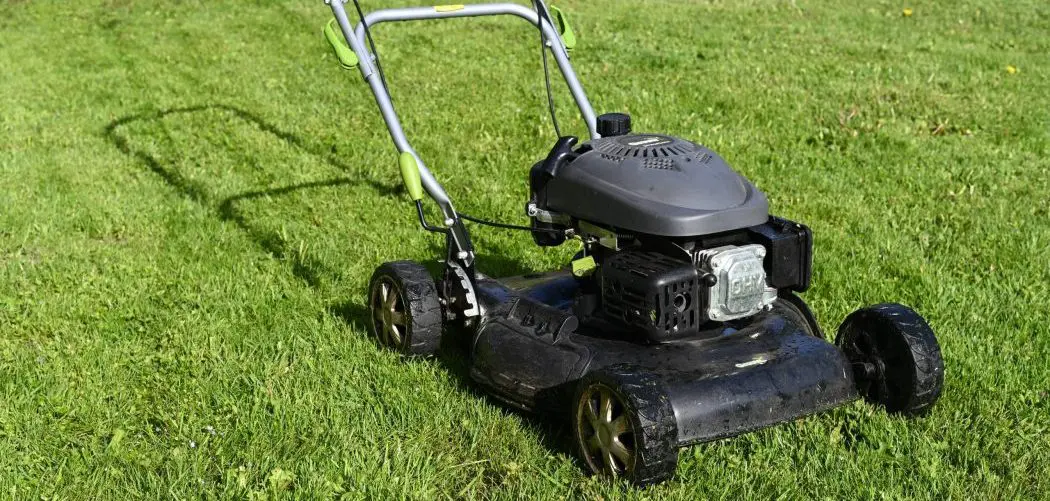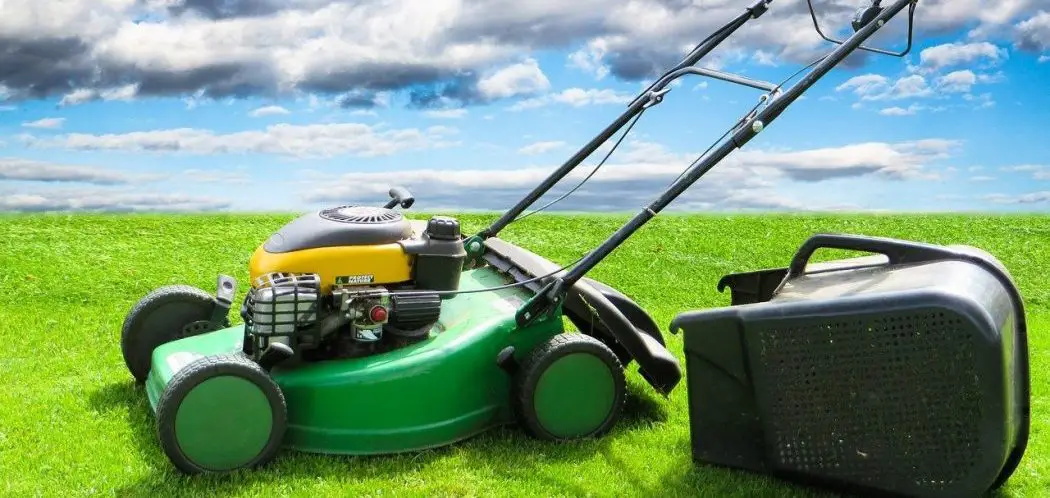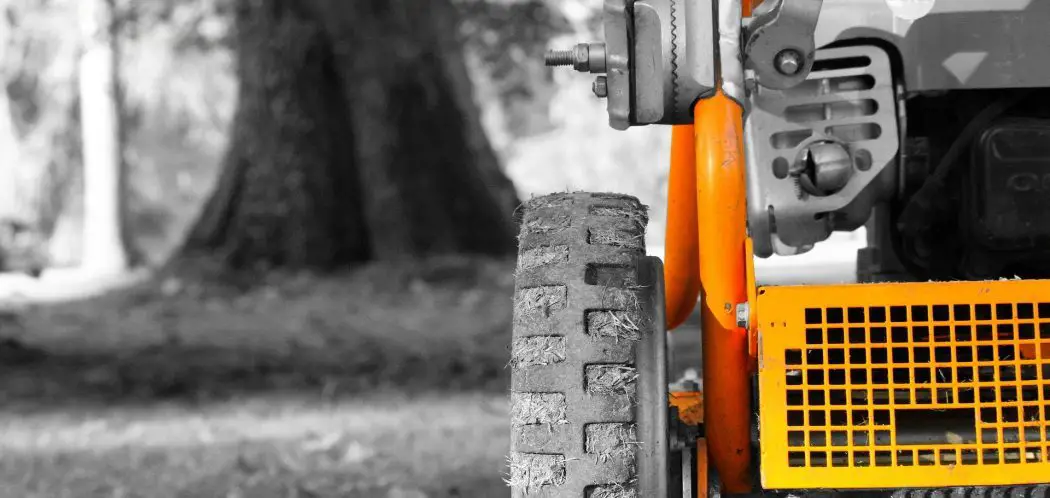While lawn mower power used to be measured in horsepower, looking at the torque in a lawn mower may just be a more accurate measurement of how powerful it is.
One horsepower is equal to 33,000 foot-pounds/minute, but what exactly is torque? As opposed to horsepower, which only calculates how much work the engine can produce, torque instead measures how much power is involved in turning the mower’s rotary blades. When you’re mowing the lawn, the blades rotate and twist to cut the blades of grass. The amount of power used to make that happen is known as the torque, and this number is especially important in a lawn mower that you’ll have to walk behind and push to cut your grass.
Torque varies a lot from one lawn mower to another. That being said, you can expect most lawn mower’s to produce 4-9 ft-lbs of torque. Heavy duty mowers tend to produce more torque making them more appropriate for larger yards with grass that is tall and thick.
How Torque Applies to a Lawn Mower
When the blades of the mower are turned on, you can see an example of torque. Torque is used to describe the rotational force produced by the engine, as in what is needed to spin the blades on the mower.
Walk-behind lawn mowers usually have a power rating expressed in gross torque, not gross horsepower. Torque, in other words, measures the capability of the engine to turn the blade to allow it to plow through tall grass. Simply put, when a lawn mower engine has a lot of torque, it is less likely to get bogged down when you cut thick or long grass, simply because there is much more force being delivered to the blade.
While torque may seem like a challenging factor to understand, not to worry because in the end, many other factors will be taken into consideration when you’re trying to determine what type of lawn mower to purchase.
What Does This Mean?
The amount of torque you choose directly affects two things: the ability to complete the job at hand, and the ability to improve the life span of the motor. This doesn’t mean that torque alone should be considered when you’re shopping for a brand-new lawn mower, but it does mean that this should be one of your considerations.
Horsepower is often considered more important for riding lawn mowers, whereas push lawn mower owners often consider torque to be more important than horsepower.
Examples of Torque for Different Lawn Mower Types
The torque you should choose for your lawn mower depends on your particular needs. You have to take into consideration how big your yard is and how thick your grass is.
If you have a small, flat yard that you keep cut regularly, you can get away with a lawn mower that has 4.50 to 5.50 ft-lbs of torque.
On the other hand, if you have a large yard or your grass is tall and thick, a medium- to heavy-duty lawn mower will work best. These mowers usually have between 6.25 and 6.75 ft-lbs of torque if they’re considered a medium-duty lawn mower and 7.00 to 8.75 ft-lbs of torque if they are considered heavy duty.
If your yard has steep hills, you should choose a heavy-duty walk-behind mower for the best results. For these and other tough jobs, using a lawn mower with torque that is too low will affect the life span of the mower, and it may even require repairs or replacements much more often.
Since torque on a lawn mower directly affects the amount of power used to rotate the blades and cut the grass, it is an important consideration when you are shopping for a lawn mower, but always realize there are other things to consider as well.
Lawn Mower Design Factors That Affect Torque
There are numerous design features that affect the torque of your lawn mower. Some of those things include:
- The configuration of the engine
- The configuration of the mower itself
- The size of the engine, which is normally described by cubic centimeter displacement
In some instances, because of the way the mower and engine are configured, you might find an engine that has less horsepower but which can deliver a bigger amount of gross torque. Greater torque always means more efficient and more improved performances by your lawn mower.
The Relationship Between Torque and Horsepower
In reality, there is no exact conversion method that compares horsepower to torque. Even though the two features are essentially two sides of the same coin, there is still quite a bit of difference between them. If you have an older 3.5 HP lawn mower, for example, and you’re trying to replace it with a lawn mower with a torque number that is equivalent to this, it might not be possible to do. That being said, there is a way to get an estimate of the torque you should buy when you’re in the market for a brand-new lawn mower. Keep in mind that this applies mostly to push mowers, since riding lawn mowers usually list their qualifications in terms of horsepower.
As a very general rule, you can take the torque rating of the lawn mower and multiply it by the RPMs. Then, divide that number by 5,250. This gives you a number that you can use to compare two items horsepower to horsepower. Keep in mind, however, that this is not an exact science. Nevertheless, you can get a general idea of what to look for when you’re replacing one lawn mower with another.
Another way you can measure torque is by multiplying the distance from the pivot point by the amount of force that is needed to turn the object – a number that is expressed in foot pounds. For instance, let’s say you have a walk-behind mower and you want to rotate the blade with your hand. Distance equals the length from the pivot point at the blade’s center, which is usually a bolt, right to where your hand is placed on the blade. Force will equal how much strength you have to exert to turn the blade. The farther away from the blade’s pivot point you place your hand, the less strength it will take to turn the blade, which means you’ll need less torque.
The smartest thing you can do is decide what type of lawn mower you want – for example, push-behind, self-propelled, and so on – and look at the information provided by the manufacturer to determine what to look for when you shop for the mower.
Here are some of my favorite lawn care products
Thanks a lot for making it to the end of this post! I hope you found it useful. Here are some lawn care products that I use and that I think you’ll also find helpful. These are affiliate links, so if you do decide to use any of them, I’ll earn a commission.
In all honesty, these are some of the basic products that I use and recommend to everyone.
Broadcast Spreader
This Scotts Elite dual rotary spreader is not a professional grade model but it’s excellent for homeowners.
I really like the edge guard on it. It’s really easy to switch on and off so it’s great for going around my driveway and flower beds.
If you’re not looking to spend hundreds of dollars, I’d definitely recommend this model. It spreads out a wide path and is great quality for the cost.
Backpack Sprayer
This 4-Gallon sprayer is my absolute favorite. It sprays for a really long time. I’ve had this sprayer for quite a while and I’ve never had the battery run out.
The adjustable pressure switch is a really import feature to me.
You can order a lot of accessories for this model but I’ve never really found much of a need for it.
Head Aerator
Hand aerators are great for small spots if you’ve got construction debris or a spot that constantly dries out.
You can also fill these holes with organic matter that will hold a bit more moisture.
This one by Yard Butler is an absolute bargain. It pulls nice long cores. I also use it for taking soil samples around the yard!

